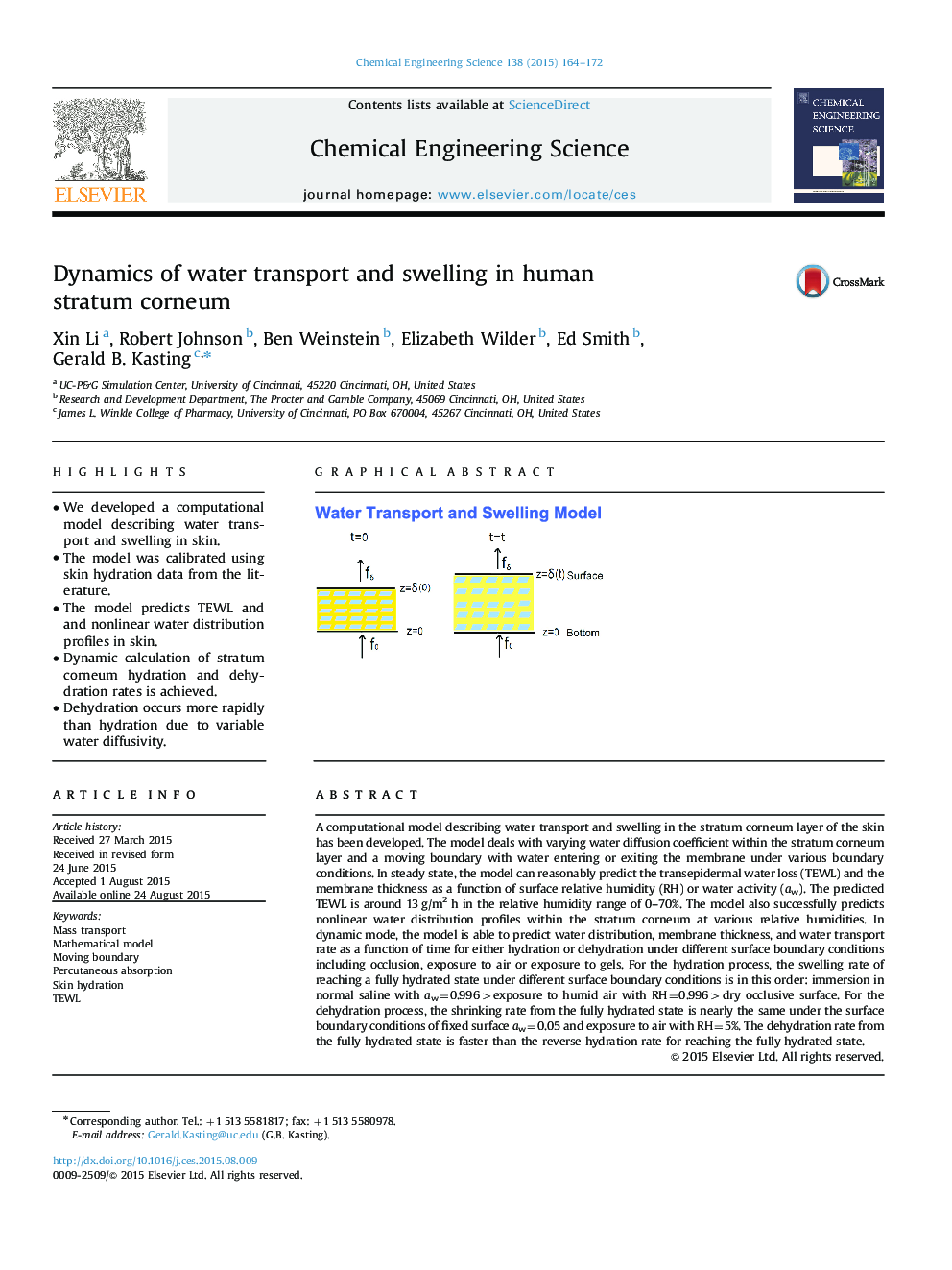| کد مقاله | کد نشریه | سال انتشار | مقاله انگلیسی | نسخه تمام متن |
|---|---|---|---|---|
| 154592 | 456846 | 2015 | 9 صفحه PDF | دانلود رایگان |
• We developed a computational model describing water transport and swelling in skin.
• The model was calibrated using skin hydration data from the literature.
• The model predicts TEWL and and nonlinear water distribution profiles in skin.
• Dynamic calculation of stratum corneum hydration and dehydration rates is achieved.
• Dehydration occurs more rapidly than hydration due to variable water diffusivity.
A computational model describing water transport and swelling in the stratum corneum layer of the skin has been developed. The model deals with varying water diffusion coefficient within the stratum corneum layer and a moving boundary with water entering or exiting the membrane under various boundary conditions. In steady state, the model can reasonably predict the transepidermal water loss (TEWL) and the membrane thickness as a function of surface relative humidity (RH) or water activity (aw). The predicted TEWL is around 13 g/m2 h in the relative humidity range of 0–70%. The model also successfully predicts nonlinear water distribution profiles within the stratum corneum at various relative humidities. In dynamic mode, the model is able to predict water distribution, membrane thickness, and water transport rate as a function of time for either hydration or dehydration under different surface boundary conditions including occlusion, exposure to air or exposure to gels. For the hydration process, the swelling rate of reaching a fully hydrated state under different surface boundary conditions is in this order: immersion in normal saline with aw=0.996>exposure to humid air with RH=0.996>dry occlusive surface. For the dehydration process, the shrinking rate from the fully hydrated state is nearly the same under the surface boundary conditions of fixed surface aw=0.05 and exposure to air with RH=5%. The dehydration rate from the fully hydrated state is faster than the reverse hydration rate for reaching the fully hydrated state.
Figure optionsDownload high-quality image (201 K)Download as PowerPoint slide
Journal: Chemical Engineering Science - Volume 138, 22 December 2015, Pages 164–172
